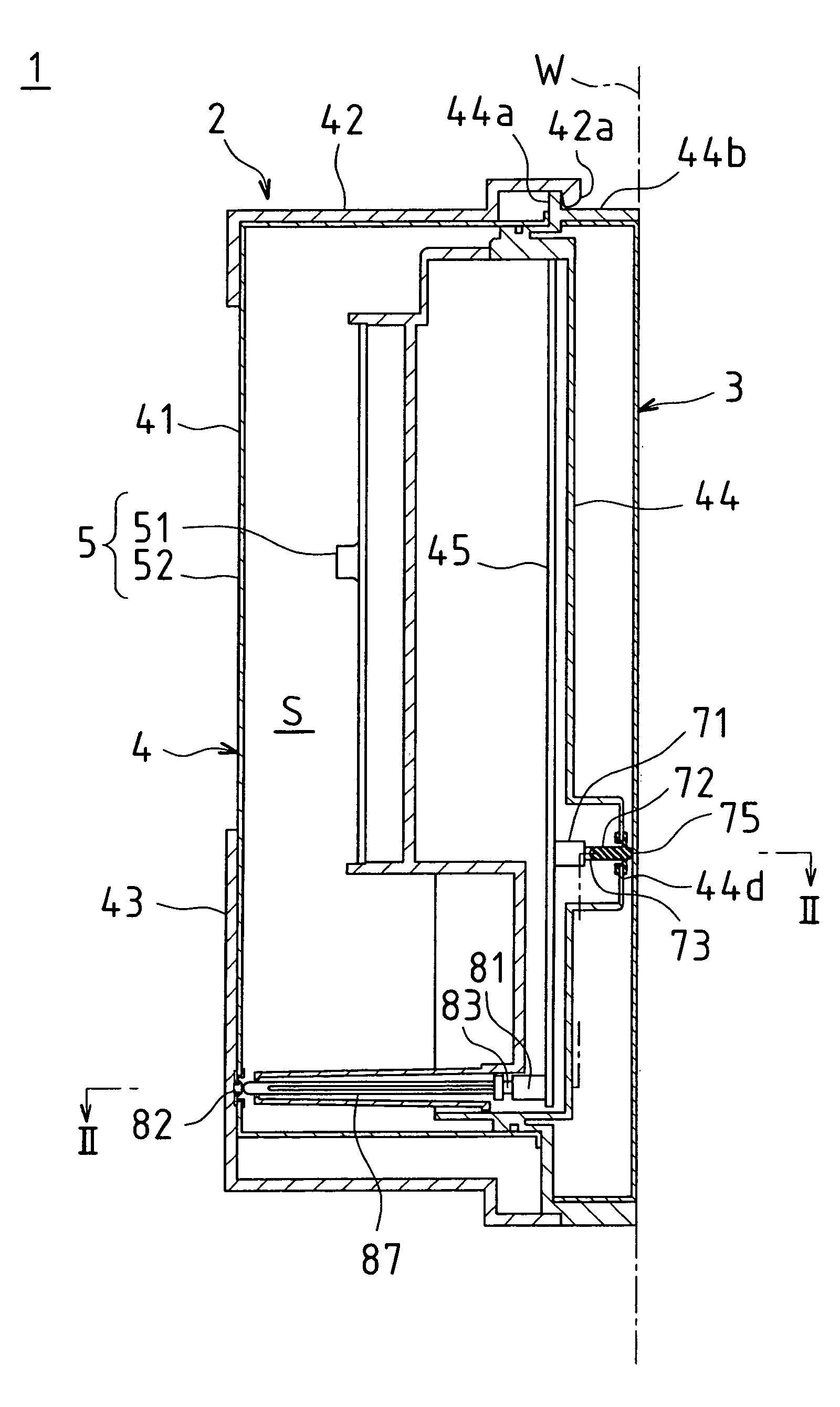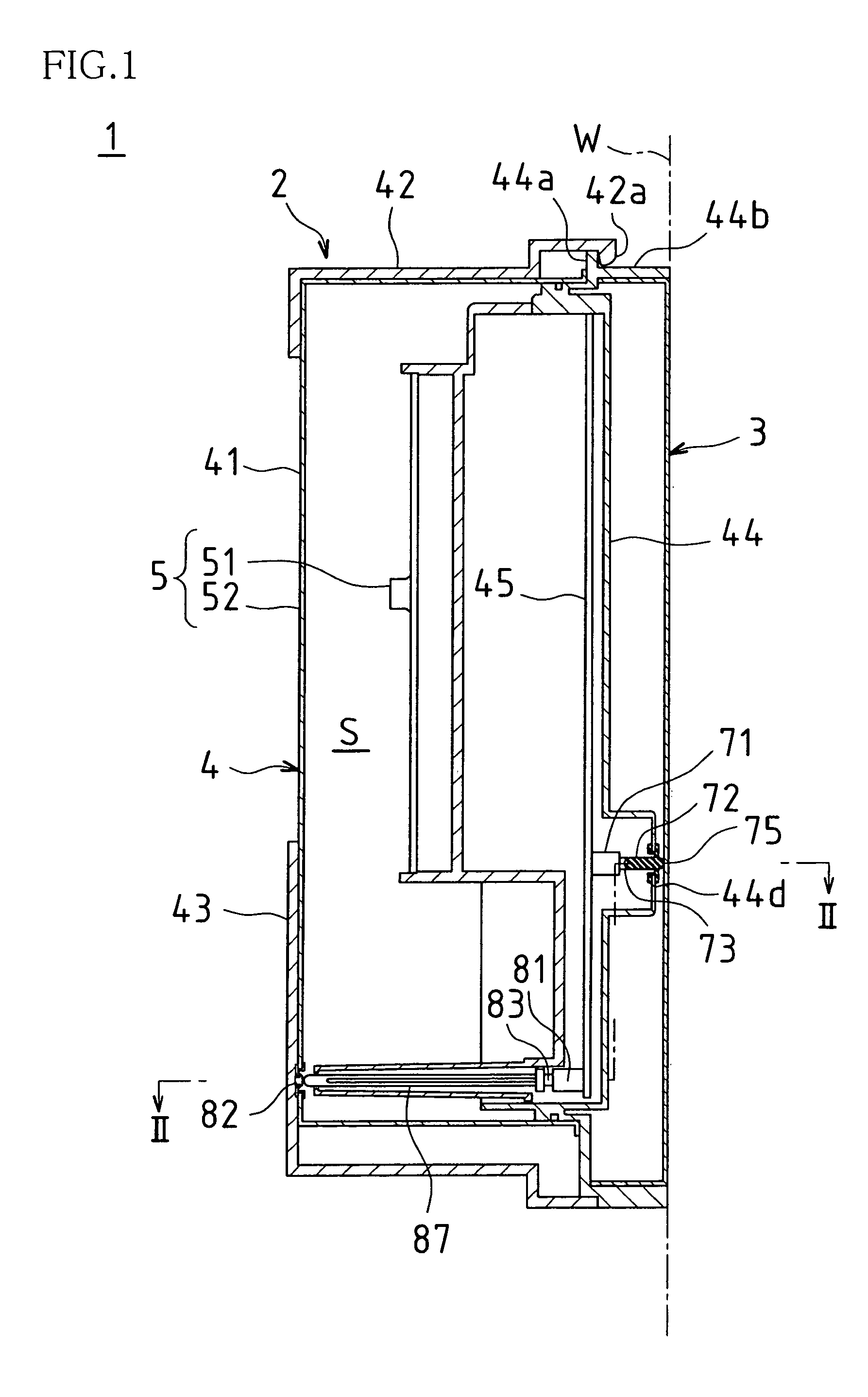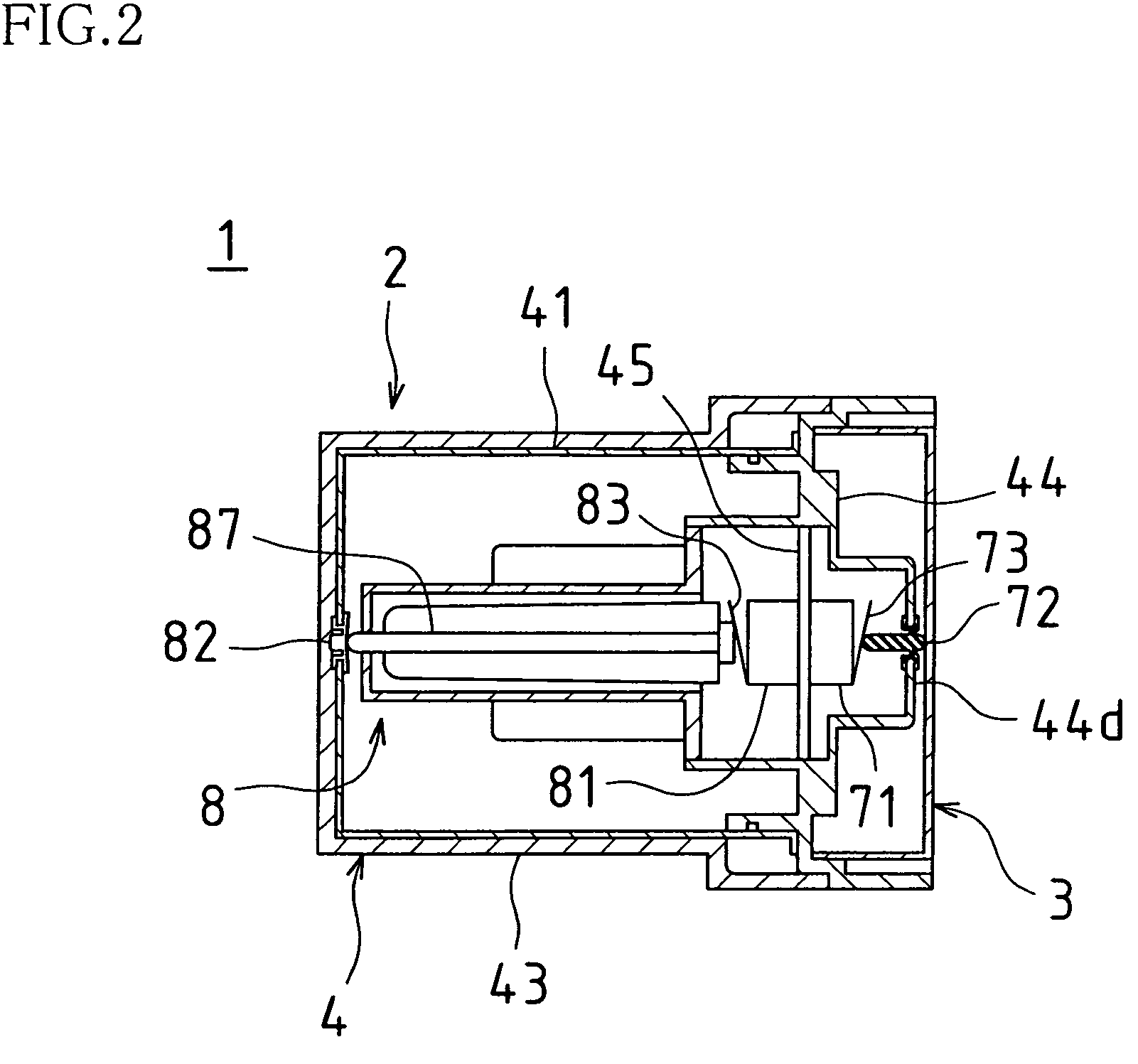Tamper switch structure and security sensor including the tamper switch structure
a technology of tamper switches and switches, applied in the direction of burglar alarm mechanical actuation, instruments, electric signalling details, etc., can solve the problems of poor operability of the intruder detection system, sensor will not be able to detect illegal intruders, and the detection of illegal intruders is disabled
- Summary
- Abstract
- Description
- Claims
- Application Information
AI Technical Summary
Benefits of technology
Problems solved by technology
Method used
Image
Examples
Embodiment Construction
[0037]Hereinafter, an embodiment of the present invention will be described with reference to the accompanying drawings. In this embodiment, a case will be described where the present invention is applied to a security PIR sensor serving as a starting switch of a security alarm device.
[0038]Overall Configuration of PIR Sensor
[0039]FIG. 1 is a vertical cross-sectional view schematically showing the internal configuration of a PIR sensor 1 according to this embodiment. FIG. 2 is a cross-sectional view of the PIR sensor 1, taken at the position corresponding to the line II—II in FIG. 1.
[0040]As shown in FIGS. 1 and 2, the PIR sensor 1 of this embodiment is mounted on an outer wall surface W (see the dash-dotted line in FIG. 1) of a house or an office building, and includes a sensor body 2 and a mounting plate 3. That is, after the mounting plate 3 is fixed to the above-described outer wall surface W, the sensor body 2 is fixed to the mounting plate 3, and thereby the PIR sensor is fixe...
PUM
 Login to View More
Login to View More Abstract
Description
Claims
Application Information
 Login to View More
Login to View More - R&D
- Intellectual Property
- Life Sciences
- Materials
- Tech Scout
- Unparalleled Data Quality
- Higher Quality Content
- 60% Fewer Hallucinations
Browse by: Latest US Patents, China's latest patents, Technical Efficacy Thesaurus, Application Domain, Technology Topic, Popular Technical Reports.
© 2025 PatSnap. All rights reserved.Legal|Privacy policy|Modern Slavery Act Transparency Statement|Sitemap|About US| Contact US: help@patsnap.com



